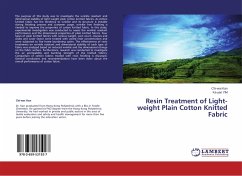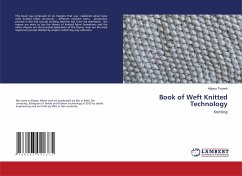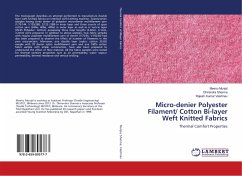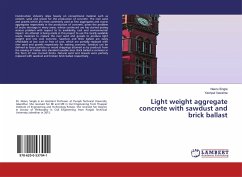
Resin Treatment of Light-weight Plain Cotton Knitted Fabric
Versandkostenfrei!
Versandfertig in 6-10 Tagen
16,99 €
inkl. MwSt.

PAYBACK Punkte
8 °P sammeln!
The purpose of this study was to investigate the wrinkle resistant and dimensional stability of light weight plain cotton knitted fabrics. As cotton knitted fabric has the tendency to wrinkle and its structure is instable during finishing process and customer usage, wrinkle free finishing is needed to improve the properties of cotton knitted fabric. In this study, experimental investigation was conducted to assess the wrinkle resistant performance and the dimensional properties of plain knitted fabrics. Four types of plain knitted fabrics with various weight, yarn court, courses and wales and ...
The purpose of this study was to investigate the wrinkle resistant and dimensional stability of light weight plain cotton knitted fabrics. As cotton knitted fabric has the tendency to wrinkle and its structure is instable during finishing process and customer usage, wrinkle free finishing is needed to improve the properties of cotton knitted fabric. In this study, experimental investigation was conducted to assess the wrinkle resistant performance and the dimensional properties of plain knitted fabrics. Four types of plain knitted fabrics with various weight, yarn court, courses and wales and cover factor were treated with varied resin concentration and were subjected to five home laundering cycles. The effectiveness of resin treatments on wrinkle resistant and dimensional stability of each type of fabric was analyzed based on induced wrinkle and the dimensional change on the fabric surface. Furthermore, research was conducted to investigate the air permeability and bursting strength of the knitted fabrics. Comparison of cotton fabrics treated with resin finishing is discussed. General conclusions and recommendations have been done about the overall performance of cotton fabric.












